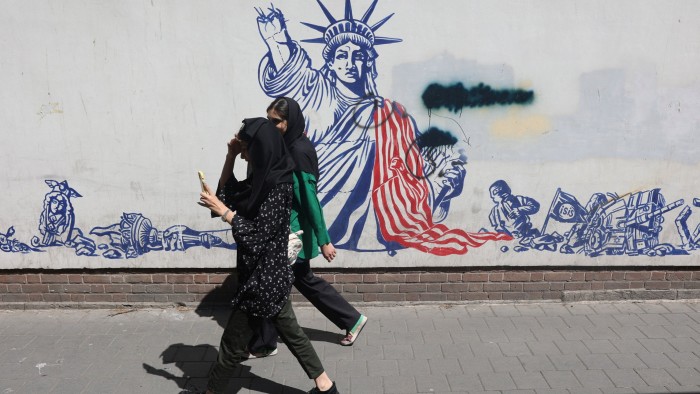Share this @internewscast.com
Unlock the White House Watch newsletter for free
US envoy Steve Witkoff and Iran’s top diplomat will meet again next week as the Trump administration presses the Islamic republic to agree to a deal to reverse its nuclear advances.
Witkoff and Iranian foreign minister Abbas Araghchi met in Rome for a second round of critical talks on Saturday aimed at ending a stand-off between Washington and Tehran that risks triggering the Middle East’s next conflict.
Araghchi described the four-hour meeting — mediated by Oman at the Omani ambassador’s residence in Rome, with the delegations in separate rooms — as “good” and “forward-looking” and held in a “constructive atmosphere”.
He said the two sides were expected to meet again next Saturday in Muscat, following “technical” discussions scheduled for Wednesday in the Gulf Arab state.
“We cannot say we are optimistic. We are cautious and have no reason to be pessimistic, either,” Araghchi told Iranian state television after the talks. “We hope that by next week, we will be in a better position to assess the possibility of an understanding.”
Before this weekend’s talks, US officials gave mixed signals about what President Donald Trump expected Iran to agree to.
Witkoff suggested at the beginning of the week that the US may be willing to allow Tehran to continue enriching uranium at low levels. But the following day he said that Iran “must stop and eliminate” its nuclear enrichment programme to secure a deal with Trump.
That would be a red line for Ayatollah Ali Khamenei, Iran’s Supreme Leader, who insists Tehran has a right to enrich uranium under the international Non-Proliferation Treaty.
Iran has expanded its enrichment programme since Trump withdrew in his first term from the nuclear accord Tehran had signed with the Obama administration, European powers, Russia and China in 2015.
Under that deal, Iran agreed to strict limits on its nuclear activity, including enriching uranium to levels no higher than 3.67 per cent purity, in return for sanctions relief.
But Iran has enriched uranium at levels up to 60 per cent purity over the past four years and has the capacity to produce sufficient fissile material required for nuclear bombs within weeks.
The US intelligence community’s annual threat assessment report said last month that “Iran is not building a nuclear weapon and that Khamenei has not reauthorised the nuclear weapons programme he suspended in 2003”.
Trump has insisted he wants to resolve the crisis diplomatically, but has warned that America would take military action, potentially alongside Israel, if Iran did not agree to a deal. The US has deployed additional forces to the region in recent weeks, including a second aircraft carrier and bombers.
Iran has pledged to retaliate against any attack.
During its National Army Day on Friday, Iran displayed a Russian-made S-300 air defence system. Israel claimed to have destroyed much of Iran’s air defences in a wave of air strikes last October. State media reported that the system, known as Bavar-373 in Iran, showcased in the parade was an “upgraded” version, reconstructed by Iranian engineers.







